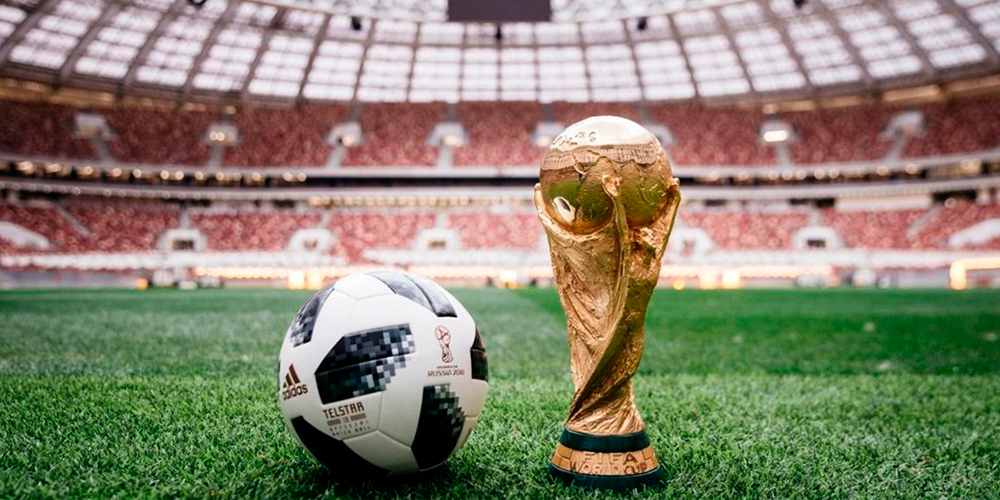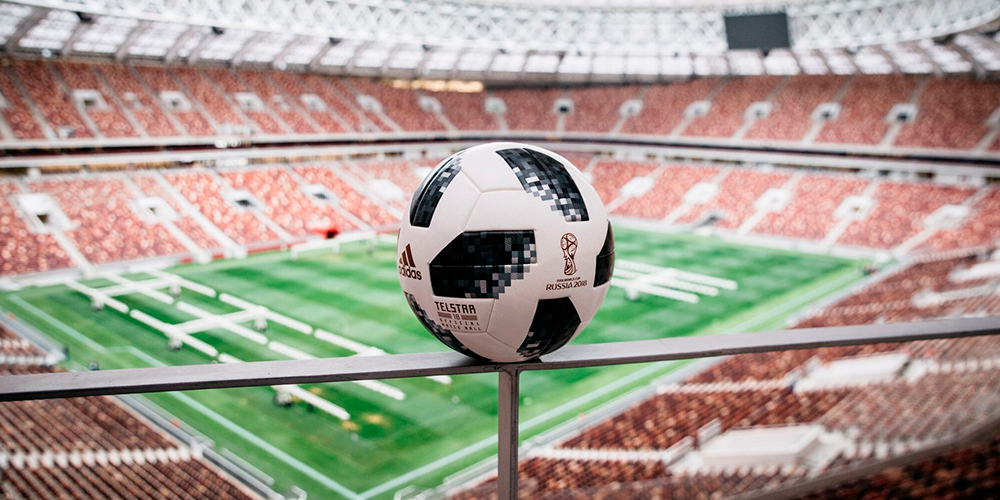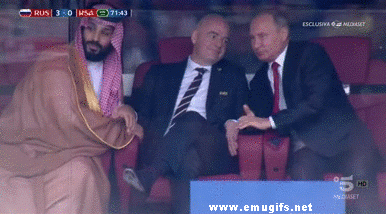Latest news about Bitcoin and all cryptocurrencies. Your daily crypto news habit.

Football, it has been said, unites millions of people from all around the world. You can feel the passion, hear the shouts, and you can’t miss the excitement when a certain team rises to the occasion. However, when you infuse groundbreaking technology into an already monumental activity, the halo spreads to billions of people!
We have some proponents of technology in football. For example, former national player of Argentina, Javier Zanetti, has thrown his weight behind VAR. Similarly, Nuno Gomes, a former Portuguese national player declared that technology will cause mistakes to be expunged in the beautiful game of football. Yet, the agreement is not unanimous.
Several others have lampooned the development, saying that it eliminates the element of uncertainty and surprise in the game. People were quoted saying they do not want perfection, rather, the game was perfect despite its imperfections.
Just before we begin to take sides, let’s analyze the different technologies being used in the FIFA World Cup 2018 and see how they work.
Video Assistant Referee
Russia 2018 is the first time we’ll witness this technology and, so far, it’s been an amazing experience. In fact, this World Cup has been called tagged the Year of Penalties- after 36 games, the referee has awarded 20 penalties.
The Video Assistant Referee, or VAR, serves as an additional support for referees and it can be used to correct errors which weren’t picked up on earlier.
The referee in charge of the game has the luxury of relying on verbal communication from the Video Assistant who is watching the video footage on a screen. The referee can also choose to view the footage himself to ascertain the judgment passed.
How does the VAR Work?
The VAR team comprises the video assistant referee and 3 other assistant video assistant referees. Despite the seemingly humbling appellation, these members are all top FIFA officials. Throughout the competition, only 13 selected referees will hold this position.
This appointment was based on how they fared as video match officials in their national competitions where they were required to demonstrate their knowledge of VAR. Some of these referees were selected to act as video match officials in Russia 2018.
The video assistant referees operate from an operation room and for this World Cup, the centralized room is situated in Moscow, at the International Broadcast Center. The VAR team has access to 33 different broadcast cameras. Of these cameras, 8 broadcast the footage in super-slow-motion mode. Four other cameras are in ultra-slow-motion.
There are four game-altering decisions which the VAR influences.
- Goals or offenses which can lead up to a goal
- Penalty decisions
- Direct red card incidents
- Mistaken identity
Goal Line Technology
Is it a goal? Is it a near-miss? Did the goalkeeper put it away? Is the referee correct? Goal line technology was implemented to put these arguments to rest. Football enthusiasts will fondly remember the legendary games where this technology could’ve been useful. Perhaps, it would’ve changed the course of history.
However, this technology made its entrance in the 2014 World Cup held in Brazil. For the technology to work, 14 different high-speed cameras were installed in the stadiums. Seven different cameras were required to monitor each goal post and their focus was on the goal line. These cameras monitored the desired location from the upper levels of the stadium, for others, the roof was used.
How does the Goal Line Technology Work?
“What is so unique about these cameras?” Well, they can capture up to 500 frames per second. They can also send the image captured to an image-processing system. This transmission is done via fiber-optic cables.
The 3D coordinates of the ball are always monitored and this is what ensures that the ball is not mistaken for the players or the referees and vice versa. The technology is utterly impressive, irrespective of the position of the ball (whether on the pitch on during flight. The margin of error is also very negligible- plus or minus 0.6 inches.
The mode of operation of this technology is simple, the entire ball must cross the line. When the condition is met, the camera captures this and sends a signal to the referee’s watch. How is the referee informed? The signal causes the referee’s watch to vibrate and then the word, “goal” flashes across the screen of his watch within a second. This is swift to ensure that the decision is made without causing the game to pause.
Before the goal line technology was adopted, several other ideas were proposed. In fact, the 2010 World Cup was a debacle as regards the use of technology and this caused FIFA to launch a test on 4 different systems. These were the HawkEye used in professional tennis, the GoalRef and Cairos GLT which works based on the principle of magnetism, and the GoalControl which they eventually went with.
Electronic Performance and Tracking Systems
This is another technology worthy of an honorable mention. With these electronic systems, swift and reliable communication is facilitated. There are workstations dedicated to the different teams through which they can exchange vital information, for both the coaching staffs and the medical personnel.
Apart from this, there are optical tracking cameras which are located on the main tribune. These cameras are used to closely monitor the players and the ball and the feedback is provided to the analysts. Insights can also be gleaned from these cameras and analysts leverage these insights to maintain real-time interaction in the course of the match.
The Adidas Telstar 18
In 1970, the Telstar was used in the World Cup. At the time, it seemed very mundane, yet this was the match ball which inspired the latest 2018 Word Cup match ball. The new development is imbued with a brand new material, high tech, and recycled packaging. Near-Field Communication (NFC) chips are also embedded in the ball to ensure communication with sophisticated smartphones.
Putin Goal System
Somewhere deep in secret labs of Siberia, specifically for Football World Championship, a special system of controlling the ball was developed and it was named PGS (Putin Goal Systems). A special case with a button was delivered to Vladimir Putin to the beginning of the Championship. Yes, he now has two cases with the button. It’s now important not to mix them up.
How PGS works
The owner of the case with the button can control the ball. Depending on the direction of the hit, one can control the ball’s path. If it flies to the Russian team goalposts, the ball will be out of play after the button is hit. If it flies towards the enemy’s goalposts, it will be a goal.
The first Putin Goal System test occurred during the match between the Russian and Saudi Arabia teams. The match ended in 5:0 to the benefit of the hosts. The system proved its efficiency. Before that Russian team lost 12 games in a row so that’s why a decision was made to use PGS but stick to more probable options. It ended in 3:1 against Egypt and 0:3 against Uruguay.
Of course, these are rumors only but you never know.
Conclusion
Are you impressed yet? Well, you should. We’ve come a long way from the maiden edition of the World Cup and it is really exciting to witness a world where football and technology co-exist. The body in charge of the World Cup, FIFA, is also not resting its oars on this matter. We hope to see improvements in the existing technology in Qatar come 2022.
The Technologies Behind FIFA World Cup 2018 was originally published in Hacker Noon on Medium, where people are continuing the conversation by highlighting and responding to this story.
Disclaimer
The views and opinions expressed in this article are solely those of the authors and do not reflect the views of Bitcoin Insider. Every investment and trading move involves risk - this is especially true for cryptocurrencies given their volatility. We strongly advise our readers to conduct their own research when making a decision.

